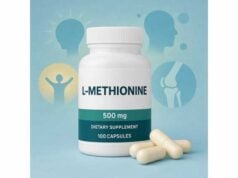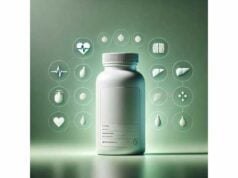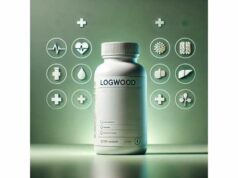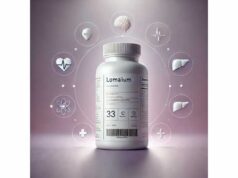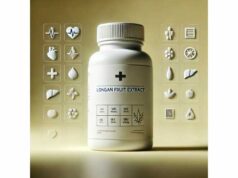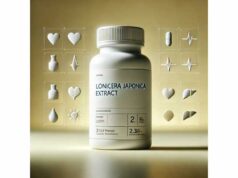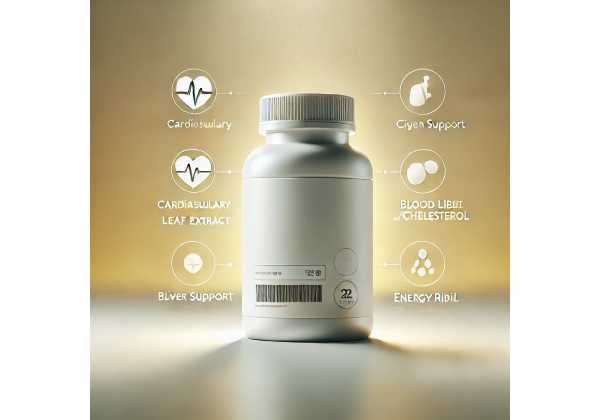
Loquat leaf (Eriobotrya japonica, also known in Chinese as Pi Pa Ye) has a long history in East Asian traditional practice for soothing “lung heat,” calming an irritated throat, and supporting digestion. Modern analyses show that the leaves are rich in triterpenes (notably ursolic acid, oleanolic acid, corosolic acid, and maslinic acid), flavonoids (quercetin and kaempferol glycosides), and polyphenols that together confer antioxidant and inflammation-modulating actions. People use loquat leaf extract as a short-course seasonal remedy, as a daily polyphenol add-on, or in combination formulas for respiratory comfort. While human trials are limited, preclinical and mechanistic studies provide plausible pathways—downshifting NF-κB signaling, easing oxidative stress, and supporting smooth muscle relaxation in the airways. This guide explains what’s inside reputable extracts, how to use them, dosage patterns that map to both traditional decoctions and modern capsules, potential interactions and cautions, and how to read labels with confidence. The aim is practical clarity: what it can help with, what it can’t, and how to use it wisely.
Quick Overview
- Most consistent signals: antioxidant and anti-inflammatory effects; traditional use for cough and throat comfort.
- Key actives include ursolic acid and related triterpenes, plus quercetin/kaempferol glycosides.
- Typical ranges: 6–12 g/day dried leaf in decoction; 250–1,000 mg/day standardized extract.
- Safety caveat: avoid during pregnancy and breastfeeding; monitor if using anticoagulants or sedatives.
- Who should avoid: those with known allergy to Rosaceae plants or upcoming surgery (within 2 weeks).
Table of Contents
- What is loquat leaf extract?
- Does it work? Evidence-backed benefits
- How to use it day to day
- How much per day?
- Side effects, interactions, and who should avoid it
- Buying quality and label checklist
What is loquat leaf extract?
Loquat (Eriobotrya japonica, Rosaceae) is a subtropical evergreen whose leaves have been used for centuries as a respiratory-soothing herb. In modern supplements, the leaves are extracted with water or hydroalcoholic solvents to concentrate bioactives, then dried into powders for capsules, granules, or instant teas. You may also see loose, decoction-grade dried leaves sold for brewing.
Core constituents to know
- Pentacyclic triterpenes: especially ursolic acid, oleanolic acid, corosolic acid, and maslinic acid. These lipophilic compounds are linked to antioxidant, inflammation-modulating, hepatoprotective, and metabolic signals in preclinical work.
- Flavonoids and phenolics: quercetin and kaempferol glycosides, cinchonain derivatives, chlorogenic/coumaroyl quinic acids; these contribute radical scavenging, enzyme modulation, and support for the redox–inflammation axis.
- Polysaccharides: less publicized but relevant for immune tone in some extracts.
Extract types and what they imply
- Water extracts emphasize polar phenolics and glycosides; they tend to be gentler on the stomach and are closest to traditional tea.
- Hydroalcoholic extracts pull a broader spectrum, including triterpene acids; these are common in standardized capsules.
- Granules (concentrates) dissolve in hot water and provide dose consistency with minimal preparation; quality varies by manufacturer and the drug-extract ratio (DER).
- Whole leaves for decoction remain popular in clinics. The fuzzy surface hairs are traditionally rubbed or scraped off before simmering to reduce throat irritation.
Standardization and label signals
A thoughtful label will clearly state Eriobotrya japonica (leaf), the extraction solvent, DER (e.g., 10:1), and a marker such as ursolic acid or total triterpenes/total flavonoids. While there is no universally required percentage, standardization helps align your product with the profile studied in the lab. Products that disclose third-party testing for identity, potency, and contaminants inspire more trust.
Where it fits in a wellness plan
Think of loquat leaf extract as a supportive botanical—good for short-term throat and cough comfort, and as an adjunct for redox–inflammation balance. It is not a stand-alone treatment for infection or chronic disease, and it works best inside a broader routine that includes sleep, hydration, and clinician-guided care when needed.
Does it work? Evidence-backed benefits
Short answer: The most reproducible findings are antioxidant and anti-inflammatory actions across cell and animal models, with traditional respiratory benefits supported by mechanistic plausibility. Human data are limited, but a small randomized trial and emerging translational research add context.
1) Antioxidant and inflammation modulation (strongest signal)
Loquat leaf extracts consistently temper NF-κB–driven cytokines (e.g., TNF-α, IL-6) and iNOS/COX-2 expression in cell systems, while boosting endogenous defenses such as SOD, catalase, and glutathione enzymes in preclinical models. Triterpene acids (ursolic/oleanolic/corosolic) and flavonoids appear to act synergistically—one dampens upstream inflammatory triggers while the other scavenges reactive species that prolong the response. In practical terms, this supports the herb’s long-standing reputation for calming irritated tissues.
2) Respiratory comfort and airway support (traditional use, modern mechanisms)
Historically, Pi Pa Ye is used for cough with throat dryness or heat. Modern work points to smooth-muscle relaxation and reduced airway inflammation as plausible contributors, with phenolic–triterpene pairs modulating MAPK and TLR pathways relevant to irritated bronchial tissue. While we lack large single-herb human trials for cough outcomes, the mechanistic overlap with traditional indications is compelling enough for short-term self-care during seasonal irritation—within common-sense limits.
3) Metabolic and weight-related signals (preclinical, mixed)
Extracts and isolated triterpenes have shown insulinotropic effects in cell models, improved lipid profiles, and inhibition of 11β-HSD1 in animal studies, suggesting a role in glucose–lipid metabolism. Some rodent studies report reductions in body weight and triglycerides at higher mg/kg ranges. Translation to daily supplementation remains uncertain; if used, position loquat leaf as adjunctive to diet and activity, not as a weight-loss agent.
4) Musculoskeletal support (early clinical)
A small randomized, placebo-controlled trial in healthy adults given 500 mg/day loquat leaf extract (standardized for ursolic acid) for 12 weeks found no overall improvements in muscle mass or performance, with a minor handgrip benefit in females. This suggests that muscle-centric marketing claims should be modest until better trials define dose–response and subgroups.
5) Neurocognitive exploration (emerging, not prescriptive)
Longer-term animal work has examined loquat leaf powder and ursolic acid for effects on Aβ42, tau phosphorylation, and working memory, with nuanced time-dependent findings. These data are hypothesis-generating rather than instructions for human use, but they add to the safety context for chronic intake and highlight differences between leaf powder, methanol extracts, and isolated compounds.
6) Hepatic and cardioprotective findings (preclinical)
Aqueous leaf extracts protected heart and liver tissue in toxin-induced models, aligning with antioxidant themes. These signals support general wellness positioning but are not a substitute for medical management of cardiovascular or liver disease.
Expectation setting
- Benefits, when present, are gradual and supportive, not dramatic.
- Best results come from short-course use for throat/airway comfort or steady low-to-moderate dosing for redox balance, alongside lifestyle basics.
- Choose formats that actually deliver the triterpene–flavonoid spectrum linked to these effects.
How to use it day to day
Pick the format that matches your goals and tolerance.
Capsules or tablets (standardized extract)
- Best for consistency and convenience.
- Look for clear species (Eriobotrya japonica), leaf as the part, extraction method, DER (e.g., 10:1), and a marker (e.g., ursolic acid or total triterpenes/flavonoids).
- Take with food if you notice stomach sensitivity from polyphenols.
Decoction (traditional tea)
- For short-term throat and cough support, many practitioners use 6–12 g/day dried leaf in 500–750 mL of water. Simmer 10–20 minutes, then sip warm.
- Preparation tip: rub or scrape off the fine leaf hairs before simmering to avoid throat tickle.
- Flavor partners like loquat flower, mulberry leaf, or a slice of pear (culinary) can soften bitterness if desired.
Granules/instant tea
- Clinic-friendly concentrates that dissolve in hot water. Match the serving to a raw-herb equivalent (e.g., a total daily amount equivalent to 6–12 g dried leaf). Always check the conversion ratio stated by the manufacturer.
Tinctures (hydroalcoholic extracts)
- Useful when you prefer liquid dosing or broader constituent capture. Typical servings fall around 1–2 mL, 1–3 times daily, diluted in water. Alcohol-free users can stick with capsules or tea.
Timing strategies
- For seasonal throat/airway support: small, divided servings across the day (morning–midday–early evening).
- For general antioxidant routines: once or twice daily with meals.
- If using at night, avoid combining with stimulants or very tannic beverages that can unsettle the stomach.
Stacking thoughtfully
- Traditional pairings include loquat leaf + loquat flower or blends with Platycodon, Schizonepeta, Mentha, or Scutellaria during the first days of a “hot” pattern.
- In modern stacks, loquat leaf can sit beside green tea extract, quercetin, or curcumin for redox balance. Start with single-herb loquat to learn your personal response before combining.
- If you use anticoagulants, sedatives, or immune-modulating medications, speak with your clinician before layering herbs that could amplify effects.
Culinary and topical notes
- Loquat leaf appears in seasonal herbal teas and some syrups/lozenges. Commercial cough syrups that list Eriobotrya typically combine it with other botanicals—check for sugars or alcohol if you’re sensitive.
- DIY topicals using leaf infusions should be patch-tested on the inner forearm for 24 hours to screen for irritation.
Storage and shelf life
- Keep products sealed, away from heat, light, and moisture.
- Use most items within 6–12 months of opening. Discard leaves that smell musty or show visible degradation.
How much per day?
There is no single “official” clinical dose for loquat leaf extract, because large, standardized human trials are limited. The ranges below synthesize traditional practice, product norms, and the doses used in research—use them to choose a reasonable starting point, then follow your product label and clinician’s guidance.
Traditional dried leaf (decoction)
- 6–12 g/day in decoction is a common adult range, divided into 2–3 servings.
- For fresh leaf, larger weights are used in traditional kitchens due to higher moisture content; most home users rely on dried material for consistency.
- Granules: dose according to the manufacturer’s raw-herb equivalency; aim for a daily total equal to 6–12 g dried leaf.
Standardized extracts (capsules/tablets)
- 250–1,000 mg/day total extract is a practical range used by many brands, often split once or twice daily with meals.
- If your product lists ursolic acid or total triterpenes/flavonoids as markers, begin at the low end for a week and titrate based on tolerance and goals.
Context from research (for perspective, not a prescription)
- A controlled trial in healthy adults used 500 mg/day of loquat leaf extract providing ~51 mg/day ursolic acid for 12 weeks, with limited effects overall and a small handgrip improvement in women.
- Animal studies that report metabolic or tissue-protective effects often use high mg/kg doses; human-equivalent calculations typically land in the mid-hundreds of mg/day for extracts—consistent with 250–1,000 mg/day practical use.
- Some long-duration rodent work suggests time-dependent effects and differences between leaf powder, methanol extracts, and isolated ursolic acid. This favors steady, moderate dosing over sporadic high spikes.
How long to try it
- For seasonal throat/airway support: 3–7 days, reassessing daily.
- For general redox/inflammation balance: 3–4 weeks of consistent use, then reassess whether you notice meaningful benefit.
Pediatric, pregnancy, and lactation
- Children: evidence is insufficient for routine pediatric supplementation. If a qualified clinician recommends loquat leaf, they will weight-adjust and limit duration.
- Pregnancy and breastfeeding: avoid extract supplementation due to limited safety data.
Practical titration plan
- Start at the lowest label dose for 7–14 days.
- If well tolerated, increase toward the mid-range based on your goal.
- If you experience GI discomfort (nausea, loose stool), take with food, reduce the dose, or switch to a water-based extract or decoction.
Side effects, interactions, and who should avoid it
Overall safety profile
Loquat leaf is considered generally well tolerated at customary amounts for short courses. Side effects are usually mild and gastrointestinal (nausea, fullness, looser stools), especially at higher polyphenol intakes or on an empty stomach.
What you might notice
- GI upset at higher doses or with very astringent formulas; taking with food usually helps.
- Taste effects: bitterness or a faint drying sensation in the mouth from tannins.
- Sedation-adjacent ease after warm tea is occasionally reported; avoid driving until you know your response.
Allergy and sensitivity
- People sensitive to Rosaceae plants (e.g., peach, almond) should be cautious. Stop use and seek care if rash, hives, facial swelling, or breathing difficulty occurs.
- The fine hairs on the leaf can irritate the throat if not removed before decoction; commercial extracts do not contain these hairs.
Cyanogenic glycosides: what to know
- Seeds/kernels of loquat can contain amygdalin and related cyanogenic glycosides at levels that raise safety concerns; do not consume seeds.
- Leaves may contain trace cyanogenic compounds, but reputable extracts and teas used at customary amounts have not been linked to cyanide poisoning in the literature. Still, avoid extreme dosing and purchase from brands with quality testing.
Drug and supplement interactions
- Anticoagulants/antiplatelets: polyphenols can influence platelet function; watch for unusual bruising and discuss use with your clinician.
- Sedatives and sleep medications: evening tea may add to drowsiness; avoid driving if affected.
- Immune-active or anti-inflammatory drugs: theoretical interactions exist due to signaling overlap; coordinate with your prescriber.
- Multiple tannin-rich botanicals: large combined intakes may increase GI astringency—stagger doses or reduce totals.
Who should avoid loquat leaf extract
- Pregnant or breastfeeding individuals (insufficient safety data).
- People with known plant allergies in the Rosaceae family.
- Those scheduled for surgery in the next two weeks (standard precaution related to bleeding risk).
- Infants and young children unless specifically advised and supervised by a qualified clinician.
When to stop and seek care
- Persistent abdominal pain, vomiting, severe diarrhea, or jaundice.
- Signs of allergic reaction (rash, swelling, wheeze).
- Worsening cough with high fever, chest pain, or shortness of breath.
Simple safety habits
- Introduce one new supplement at a time so you can attribute effects.
- Keep a 2-week log of dose and response.
- Reassess at four weeks; if no benefit, discontinue rather than escalating dose.
Buying quality and label checklist
1) Confirm the right plant and part
Your label should state Eriobotrya japonica and leaf. Avoid vague “loquat extract” listings that omit species or plant part, since fruit, flower, and seed have different profiles and safety considerations.
2) Prefer marker-based transparency
Look for ursolic acid (or total triterpenes) and/or total flavonoids listed as marker compounds, plus the extraction solvent and DER (e.g., 10:1). This does not guarantee effects but signals manufacturing discipline.
3) Ask for testing
Credible brands provide lot-specific Certificates of Analysis covering identity (HPTLC/HPLC fingerprint), potency, microbial counts, heavy metals, and pesticide screens. If a brand cannot provide this documentation upon request, choose another.
4) Understand harvest and processing
Triterpene and flavonoid levels vary by cultivar, season, and post-harvest handling. Products that disclose controlled drying and light-protected storage are less likely to degrade. Choose sealed packaging and avoid stock that’s been on a warm shelf for months.
5) Match the form to your goal
- Short-course seasonal support: decoction-grade leaves, granules, or a standardized capsule.
- Daily antioxidant add-on: a capsule standardized to a marker is easiest to dose consistently.
- Sensitive stomach: consider water-extracted products or tea rather than highly astringent hydroalcoholic extracts.
6) Evaluate price by potency
Compare cost per mg of the declared markers—not just bottle price. Very cheap products with no marker data often indicate underdosed or adulterated powders.
7) Ethical sourcing and authenticity
Ask about country/region of origin and traceability. Established suppliers usually publish sourcing and authenticity practices and may participate in third-party verification initiatives.
8) Smart trial protocol
Trial a single-herb loquat product for 2–4 weeks. If helpful and well tolerated, continue or explore combination formulas that mirror traditional pairings. If you do not notice clear benefits, discontinue and reassess your goals.
References
- Traditional uses, phytochemistry, pharmacology, and toxicity of Eriobotrya japonica leaves: A summary 2022 (Systematic Review)
- Effect of Loquat Leaf Extract on Muscle Strength, Muscle Mass, and Muscle Function in Healthy Adults: A Randomized, Double-Blinded, and Placebo-Controlled Trial 2016 (RCT)
- Long term administration of loquat leaves and their major component, ursolic acid, attenuated endogenous amyloid-β burden and memory impairment 2023 (Animal and Cell Study)
- Research Progress on Extraction and Separation of Active Components from Loquat Leaves 2023 (Review)
Medical Disclaimer
This article is educational and is not a substitute for personalized medical advice, diagnosis, or treatment. Always consult a qualified healthcare professional before starting, stopping, or changing any supplement, especially if you are pregnant or breastfeeding, have a medical condition, or use prescription medicines. If you develop signs of an allergic reaction, severe digestive symptoms, high fever, chest pain, or breathing difficulty, stop use and seek medical care promptly.
If you found this guide useful, please consider sharing it on Facebook, X (formerly Twitter), or any platform you prefer, and follow us for future evidence-based updates. Your support helps us continue creating high-quality, independent content.

